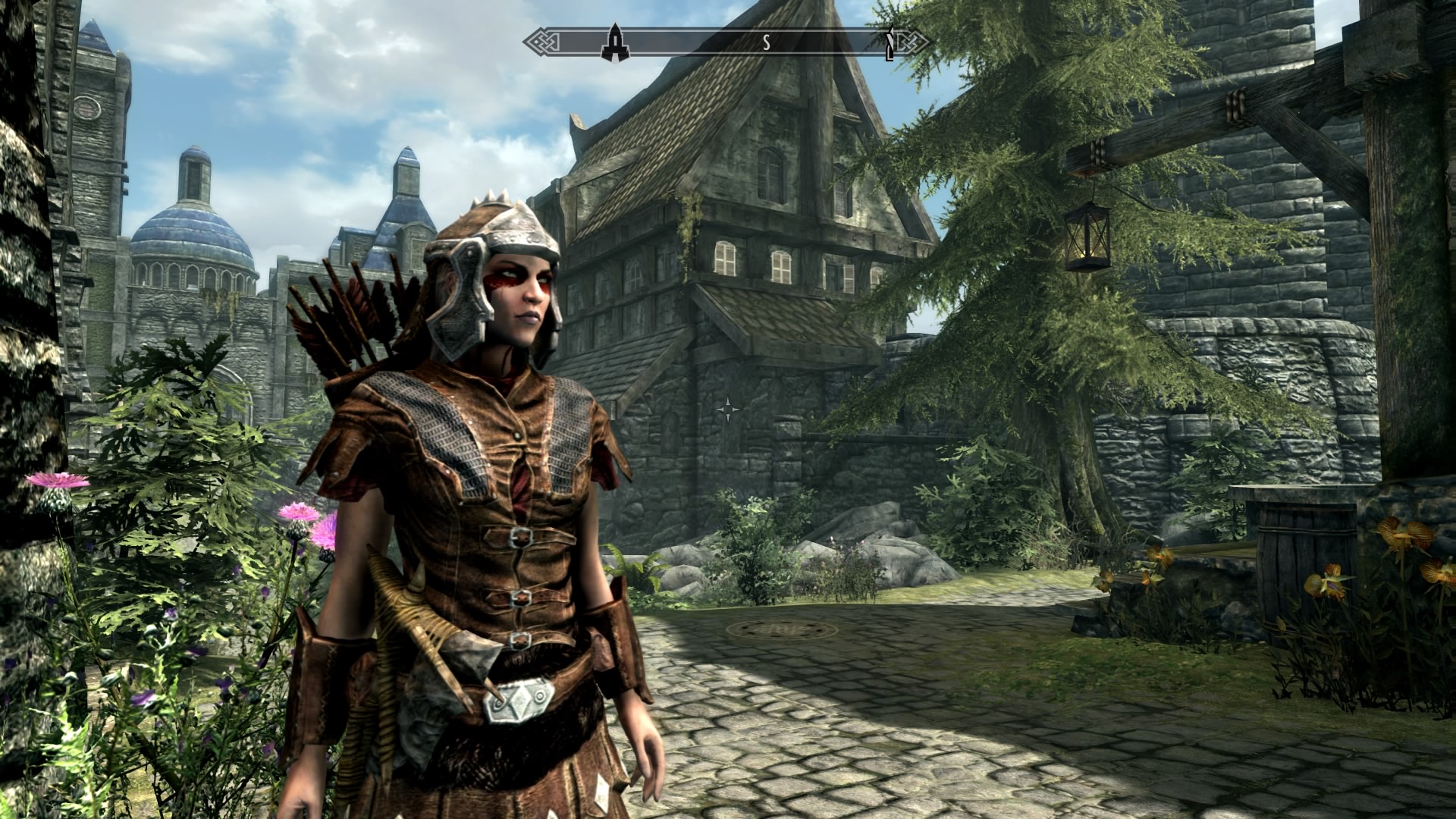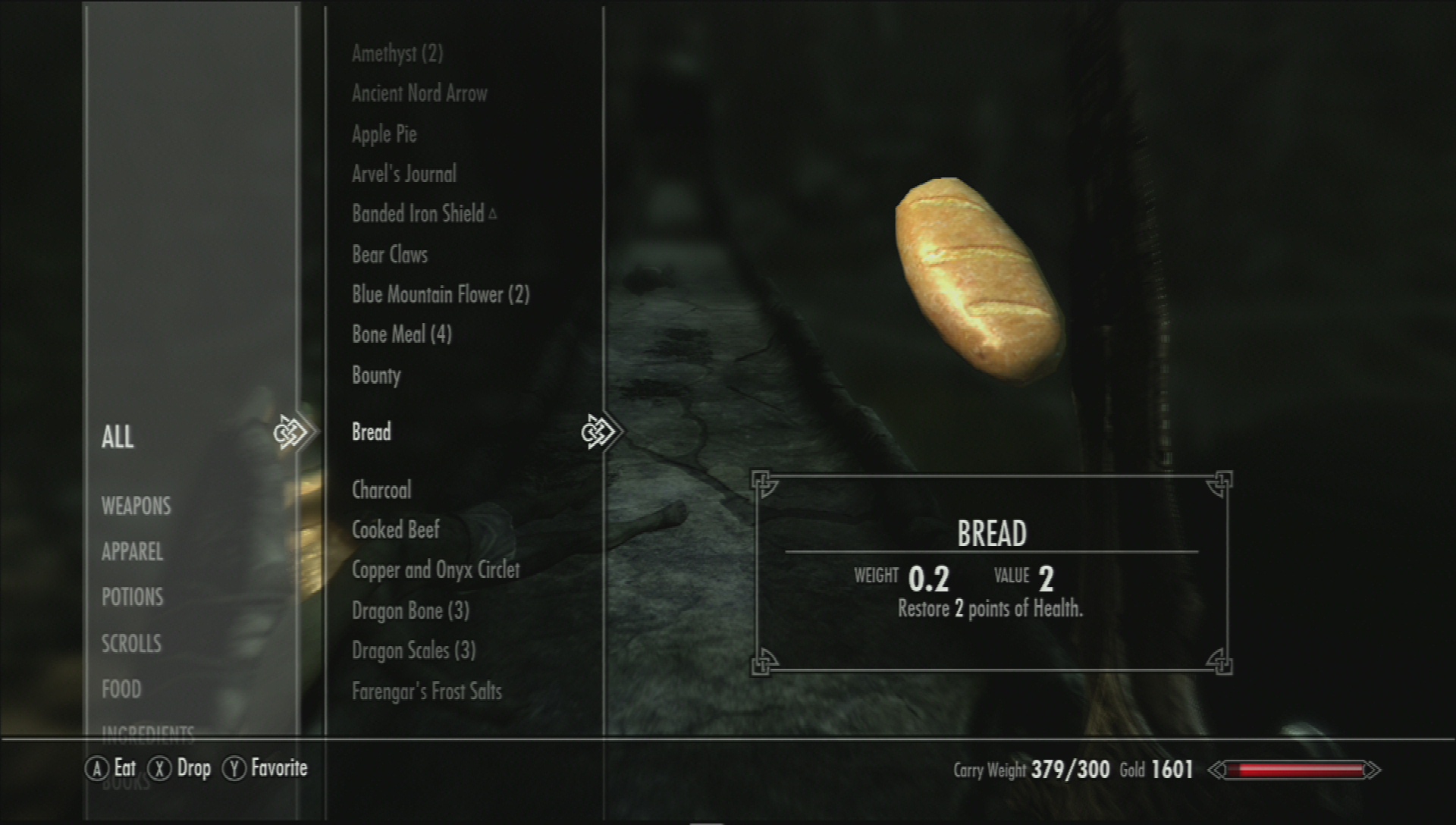This is how to improve video game inventory screens (sort of...)

What’s in your pockets right now? I’ll wait here while you empty them out on the table. Of course, I’m not actually waiting. Writing is one-way communication and I have no idea who you are or what you’re doing at any given – oh, you’ve finished emptying them? Good.
Now I will guess what’s in front of you. A mobile phone. A wallet. A crumpled receipt from Lidl for tin of chickpeas. A bad crayon drawing of either a small horse or a large dog. A blood-spattered Polaroid of a brother whose murder you vowed to avenge. A blood-spattered Polaroid of a brother whose murder you vowed to justify. The key to the room that nobody must enter. An off-brand Coronation Street fidget spinner. A motivational sticker that says ‘Keep on keepin’ on’, and a well-thumbed book of advanced fidget spinner tricks.
If I’m wrong about most of these, it’s for the simple reason that we just can’t carry that much stuff on our person. The situation is worse still for women, who rarely even enjoy the luxury of pockets and so must drag all of their belongings around behind them in a beautiful silken bag on the end of a piece of string. Yet games perpetuate the well-established myth of the bottomless pocket, the infinitely expandable backpack and the burdenless armoury. Games created the accursed inventory screen. And it’s time we – or more accurately I, alone, in my capacity as a Renowned Fixer of Game Problems – fixed it.

The Problem
There are a variety of types of inventory in games, and they are all terrible to some degree. The first is weight-based, as seen in all Bethesda RPGs, a system that paralyses you for picking up one too many grapes. The second is tile-based, as seen in Resident Evil games, which inexplicably attempts to replicate the boundless frustration of packing a suitcase while being attacked by feral dogs. The third is slot-based, pioneered by the original Halo and now found in most modern shooters. It permits you to carry just one big gun, one little gun and one flavour of grenade.
The final and most egregious form of inventory is the sprawling, scrolling, uncategorised list of every potion, cog and pork chop you’ve picked up throughout the course of your adventure. Impractical and ugly, the listed inventory is very much the ‘kitchen drawer of assorted crap’ of organisational methods, and along with its variants has led to such miserable gaming quirks as freezing time mid-battle to eat nine wheels of cheese.

The Solution
Many games have attempted to supplant the tyranny of inventory screens with their own systems, but with little success. The 2004 remake of Alone In The Dark had you pulling items from your inside jacket pockets, which bulged like the trenchcoat of a shady Rolex salesman. Interestingly, the game didn’t pause as you rifled for ammunition, so monsters could attack you mid-rummage. The satirical Discworld point-and-click adventure went in the opposite direction, justifying your impossibly capacious inventory by having all your stuff follow you around inside an anthropomorphised treasure chest.
I applaud that level of realism, but we can go even further thanks to my very practical solution. Games should force you to stand on a set of scales as you play. With each in-game item you collect you must place an equivalent weight somewhere about their person. Pick up a virtual coin and you must pick up a real one. Collect a nice sword and you must strap your microwave to your back. As you play you become increasingly – and very realistically – encumbered until, finally, you are sensationally crushed beneath your own sofa in one beautiful, spine-crushing moment of accurate inventory simulation. Glorious.
Weekly digests, tales from the communities you love, and more
This article originally appeared in Xbox: The Official Magazine. For more great Xbox coverage, you can subscribe here.
Steve Hogarty is a London-based freelance journalist covering games and technology. His bylines have appeared in publications including GamesRadar, The Independent, Yahoo, VICE, Eurogamer, and more. He is also the co-host of the pocast, Regular Features.



